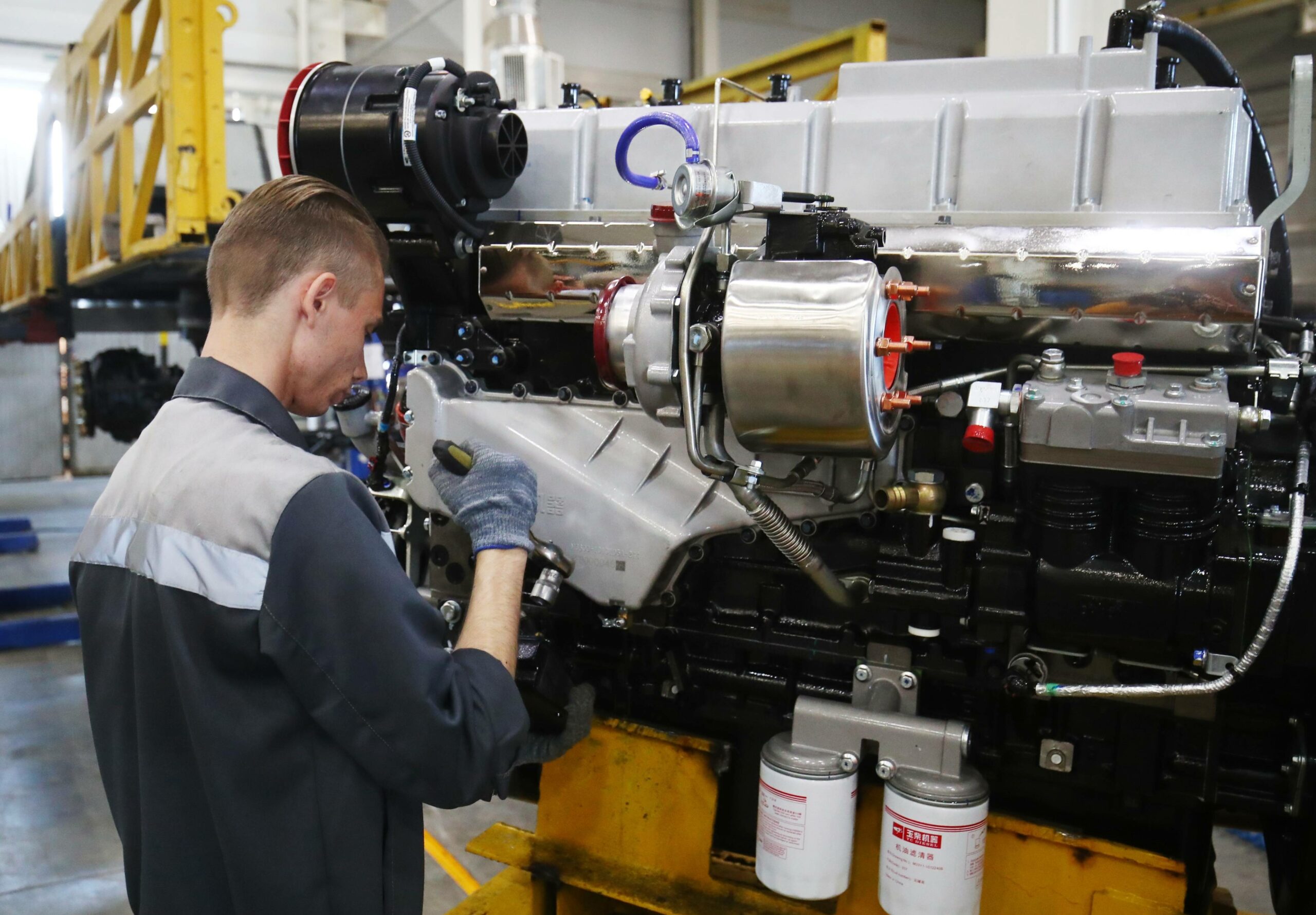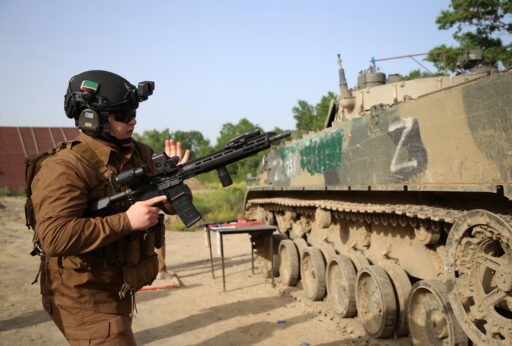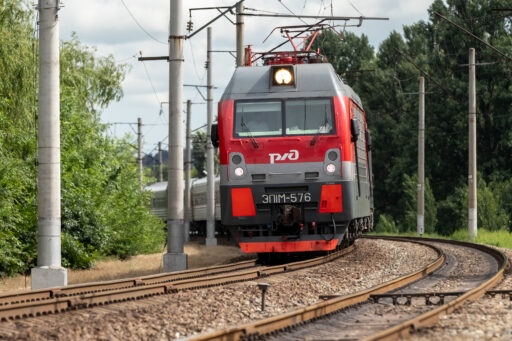After a recovery growth in 2023 (+69%) and 2024 (+48%), the Russian passenger car market turned negative in 2025, with the summer bringing a series of alarming signals: major car factories are cutting workweeks, car dealerships are closing en masse, dealer warehouses are overflowing with hundreds of thousands of unsold vehicles, auto loan delinquencies have reached record levels, and Russians are increasingly switching to older cars.
In July, sales of new passenger cars fell by 11% compared to the same period last year (down to 121,000 units). From January to July, the decline reached 24%, with the market shrinking to 651,000 vehicles. The Association of European Businesses (AEB) and Autostat forecast a roughly 20% contraction for the year—to about 1.25 million vehicles—while AvtoVAZ estimates an even deeper drop to 1.1 million. Given that over half of sales now come from imports, domestic production in Russia this year may amount to only about 600,000 vehicles, while the combined capacity of Russian car factories is designed to produce around 3 million units annually.
Production and employment are adjusting to the new realities. Since August 1, KamAZ has shifted some divisions to a four-day workweek, GAZ has reduced its workweek, and AvtoVAZ is considering a similar step. Factory management directly links these decisions to the high key interest rate, rising auto loan costs, and pressure from Chinese imports. Despite a 63% reduction in imports of new cars in the first half of the year (down to 149,000 units), dealer warehouses have accumulated around 500,000 unsold vehicles, a significant portion of which are Chinese brands.
The financial situation of buyers continues to deteriorate. Auto loan delinquencies in the second quarter surged by 85% year-on-year, reaching 32 billion rubles. The share of loans with delinquencies exceeding 90 days hit 4%, while the issuance of new loans dropped by nearly 50%. For a market segment heavily reliant on credit, this is a serious blow, directly limiting demand.
Technological disruptions in production and model lineup development add to the challenges. In August, AvtoVAZ postponed the mass production of the new Lada Iskra due to a shortage of components. Even the most «import-substituted» model, the Lada Granta, is only 46% localized, while the industry’s weighted average localization level in 2024 stood at about 33%. This shows that rapidly restructuring supply chains and eliminating import dependency in a technologically complex industry like automotive manufacturing is impossible, even with support from «friendly» China.
Finally, the Russian car fleet is aging rapidly. In the first half of 2025, over 500,000 foreign cars older than 20 years were sold (more than 20% of the secondary market). The average age of passenger cars reached 15.5 years, with 71% of the 47.5 million-strong car fleet now consisting of vehicles over ten years old. The reason is simple: the average price of a new car has exceeded 3.1 million rubles ($ 38.5k), nearly double the 2020 level, and it’s not stopping there. More and more Russians are opting for cheaper, older cars, sacrificing comfort and safety for affordability.
All these symptoms indicate that the crisis is not only cyclical but also structural, with consequences extending far beyond the current downturn.
The Double Blow from China
The current processes reflect a prolonged crisis triggered by new geopolitical realities following the start of the full-scale war in Ukraine. The departure of Western automakers left not only a technological void but also an institutional vacuum that Russian carmakers have been unable to fill. Chinese brands quickly occupied the vacant niche, but not by establishing full-fledged production in Russia. Instead, they rely primarily on direct imports of finished vehicles, vehicle kits, and key components, as well as organizing simple assembly operations. In the commercial vehicle segment, the focus has been almost exclusively on mass imports of ready-made vehicles from Chinese factories and leveraging the dealer and service infrastructure left behind by European brands.
As a result, the Russian automotive industry, already under pressure from various sanctions, finds itself doubly vulnerable:
- Technologically and component-wise: Without supplies from China, even current production volumes cannot be sustained.
- Market-wise: Chinese companies engage in aggressive price competition and actively introduce new models, displacing Russian players from their own market.
In 2024, Chinese brands accounted for about 60% of new car sales, with their share of imports reaching 77%. By the end of 2025, this figure could approach 90%. Notably, eight of the top ten automakers by sales volume from January to July were Chinese brands, whereas in 2021, none were on the list. With European automakers unprepared to return to Russia and the cost of repairing European cars rising by 25−35% over the past year, the process of phasing out European foreign cars from the Russian market is becoming irreversible.
In such conditions, strategic initiatives like «import substitution» lose their meaning. Russian factories lack access to modern technologies and investments, and production, even when it recovers, is largely based on assembly rather than localization. This is due not only to the risks of sanctions for foreign companies investing in Russian automotive production but also to the limited scale of the Russian market (1−1.5 million vehicles, half of which are imports). The market size makes large-scale localization projects economically unviable. As a result, any significant drop in demand or supply chain disruption immediately halts assembly lines.
The state’s room for maneuver is limited. Support measures—from subsidizing auto loans to administrative bans on importing certain models—yield short-term effects and may provoke retaliatory moves from Beijing, including restrictions on critical component supplies. Attempts to stimulate localization through sharp increases in the recycling fee are highly risky. Nevertheless, at the end of 2024, the fee was raised by 70−85%, and from January 1, 2025, it increased by another 10−20%. Now, the recycling fee for the most common car type (with engines up to two liters) is about 668,000 rubles, which is fully or partially passed on to the final consumer.
The result was the opposite of expectations: instead of spurring localization, Chinese companies imported a record number of vehicles into Russia ahead of the fee hike to stockpile inventory. However, the cooling demand in 2025 forced them to sell these stocks at discounts ranging from 150,000 to 1 million rubles ($ 1.86k to $ 12.4k), creating additional pressure on Russian players. Later, AvtoVAZ also faced warehouse overstocking, forcing it to cut its 2025 production plan and seek urgent government assistance. The head of KamAZ even stated that «we could stop producing altogether,» as the stockpile of Chinese trucks is already sufficient to meet total demand this year.
Thus, the fundamental problems arising from the departure of European companies and exacerbated by sanctions cannot be resolved through administrative measures. No factors are visible on the horizon that could quickly change the situation.
Toward the «Simplification» of the Automotive Industry
Today’s crisis cannot be explained solely by recent events. It is the logical culmination of the industry’s «simplification» process, the first signs of which emerged soon after the war began. This process is intensifying: joint platforms with European, American, Japanese, and South Korean automakers have been shut down, the production of many components involving international suppliers has been curtailed, multibillion-dollar Western investments under long-term special investment contracts have been canceled, and the model range available to Russian buyers has sharply contracted.
In return, the industry has received «autonomous» production in the form of dominant knock-down assembly with low localization, oriented almost exclusively toward the domestic market and devoid of export potential. Externally, this looks like post-sanctions recovery: assembly lines are running again, dealerships are filled with cars, and the market is functioning. But behind the façade lies technological stagnation: factories receive ready-made Chinese vehicle kits; only basic operations (stamping, welding, body painting) are being re-mastered; critical components are either substituted in a rush or sourced from suppliers willing to risk secondary sanctions and payment blockages.
Against the backdrop of the global automotive industry moving toward electrification, automation, digital services, and artificial intelligence integration, the Russian industry is solidifying its position as a producer of traditional, rapidly obsolescing vehicles dependent on a single external supplier of technologies and components—China. Meanwhile, Beijing shows no willingness to share its cutting-edge developments and technologies. This dependency is gradually reshaping the very architecture of the industry, simplifying its essence.
The 2025 crisis has merely exposed and accelerated this trend. Falling sales, rising auto loan delinquencies, reduced workweeks at factories, dealership closures, and an aging car fleet are not temporary disruptions but organic manifestations of an industry losing technological complexity, diversity, export potential, and development prospects. In the near future, the Russian automotive industry will only be able to maintain the appearance of stability, operating in a constant «firefighting» mode. Without access to global technologies and capital, it will have to repeatedly adapt to a shrinking market and a dependent position.










